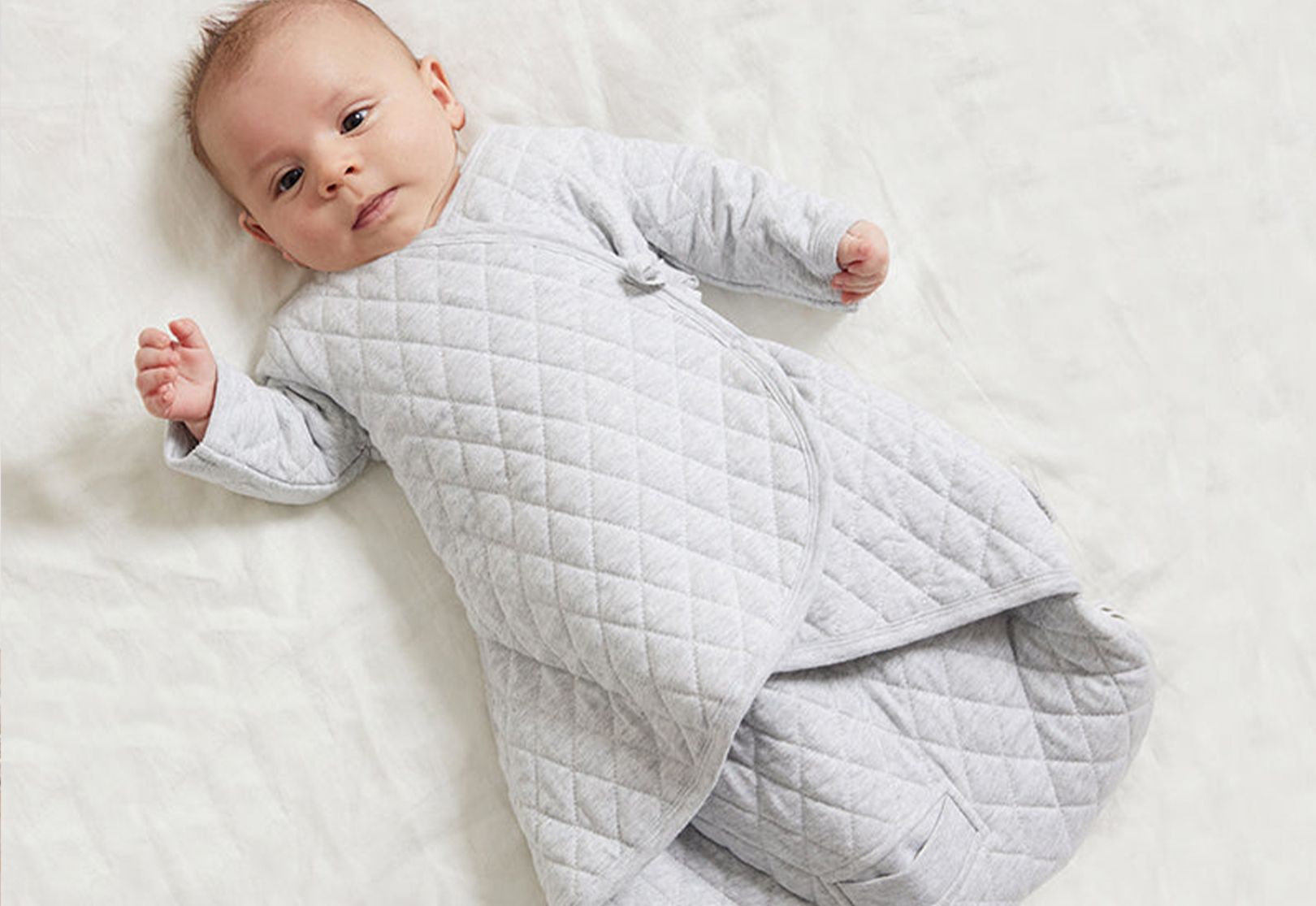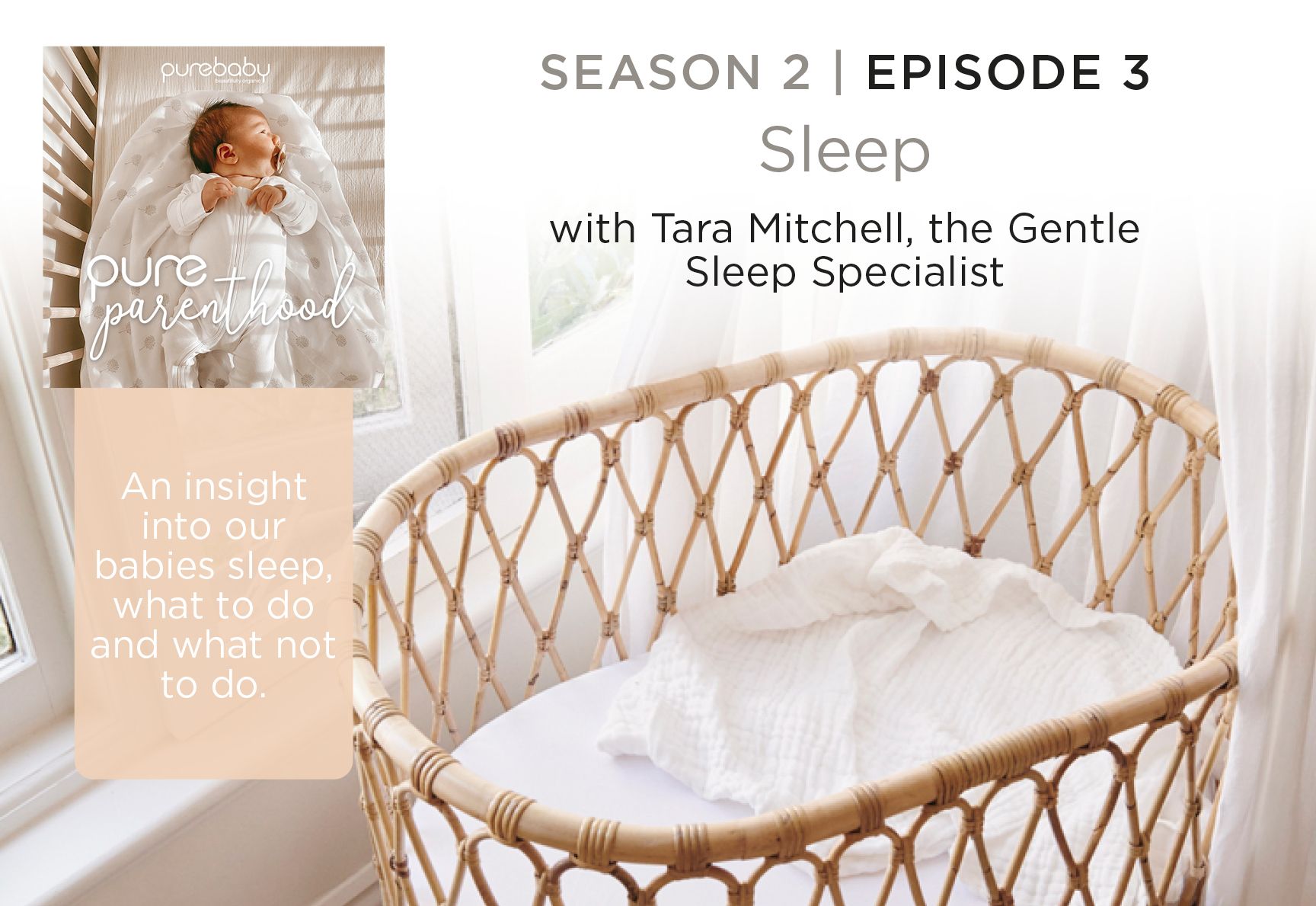
Purebaby’s New Sleep Solutions
5 min read | 9 March 2021
12 min read | 14 March 2021

Let’s talk about little ones' and their sleep!
Babies tend to have both lighter and more active surfaces of sleep compared to adults. We typically have lengthier sleep cycles and spend more time in a deep sleep, however, children spend up to 75% of their sleep cycle in a light sleep.
A baby's sleep cycle is usually around 40-90 minutes at a time. As they grow, their sleep cycles become longer and more defined, allowing your little one to sleep for longer periods.
Setting some sort of pattern or routine around sleep time can be a great idea, but this doesn’t need to involve strict schedules, strict feed times and added pressure. Be mindful of your baby’s awake times and how long they should be awake for, at their particular age or stage. During these awake times, focus on getting an effective feed in while they are alert, and then offer sleep before they become overtired.
Whilst routines are important, more often than not poor sleep isn’t linked to not having a bedtime routine. In fact most, if not all of the families I work with have some kind of routine prior to a sleep consultation, but are still experiencing poor sleep. Sometimes too much of a wind down routine can actually cause harder settles because when little ones have a lot of down time before a nap, it can cause them to lose sleep pressure and fight sleep.
A nice and simple bedtime routine could be a bath, a feed, brush their teeth, read a book, and then into bed. It is ok to keep it simple. A dark room, white noise, breathable organic cotton sleepwear and a safe sleep space is a great foundation.
Sleep plays such an important role in a baby's development and growth, both physically and emotionally. Think of it as your little one learns while they’re awake, and then they store, process and create memories during sleep time.
Brain functions mature
Connections form between the left and right hemispheres of the brain and is strengthened
Critical abilities such as language, attention, impulse control, and skill development are formed
Stress hormones are reduced
Growth hormones are released
Immunity is strengthened
Tissues are regenerated
Memories are stored and processed

When it comes to creating a sleep space for your baby, remember that you don’t need to overdo it. Keep it simple.
Having your little one sleep in the same room as you for the first 6-12 months is recommended, however they should have their own sleep space in that room, whether it be a cot or bassinet. When it comes to nests or co-sleepers, ensure that you check that these meet regulations or Australian standards before purchasing.
Ensure that the temperature of the room is not too hot
Ensure that you use a flat and firm mattress.
Keep curtain cords or blinds out of reach
Place the sleep space away from shelving, cords and powerpoints
Ensure that there is nothing else inside the sleep space while your little one is sleeping. This means no pillows, additional bedding, toys, white noise machines or bumpers. These can be placed outside of the sleep space out of reach.
Be mindful of awake times
Be mindful of your baby's awake times at each age. Around 15 minutes before sleep-time, you may start to observe some or all of the below signs:
Loss of engagement
Turning away
Avoiding interaction
Going quiet
Look to put your baby down for a sleep during this time. If your little one is showing signs of overtiredness, such as rigidness, red eyes or are irritable, it may be a little more difficult to get them to sleep.
Look at building sleep pressure, without making your baby overtired. The more overtired your little one is, the higher the levels of the stress hormones, adrenaline and cortisol, making it difficult to get into a deep sleep.
Instead of trying to make your baby overtired during their awake time, ensure that they are really awake during their awake time. This means while they are feeding, they are having a good feed, and if they are playing, then they are having a good play. If your little one is dozing throughout their awake times or feeds, this means that they lose that sleep pressure and it may become difficult for them to fall into a deep sleep.
The more roles that we play in getting our little ones to sleep, the more roles your baby thinks you need to play in getting them to sleep. It is normal for babies to wake multiple times throughout their sleep, it is almost like they are completing a ‘safety check’. Is everything as it was?
If your little one falls asleep in your arms and wakes up in their sleep space, there is a likely chance there will be a sudden waking and crying. Similarly to if your baby falls asleep with a dummy, and then wakes without it. Look to encourage your baby to fall asleep where they will wake up, so they have more of a chance of getting into those deeper sleeps.
It is very common for your little one to be crying while they are asleep. As children spend around 75% of their sleep in a lighter surface of sleep, it is normal for your little one to do all sorts of wonderful things while they are sleeping. Your baby may cry, smile, whimper or move around.
If your little one is crying while they are asleep, give them a moment before going to settle them as there is a chance that they will stop and continue sleeping.

As long as your baby positions themselves on their side or back, this is ok. It is important to sleep your little one on their back, however once they position themselves on their side or back themselves, you do not need to reposition them on their back.
If your baby is still being swaddled and their arms are not out, then it is important for them to sleep on their back. Always follow the SIDS and safe sleep guidelines if you are unsure.
If a baby sleeps with their eyes open, this may be part of their light sleep phase. Another reason that your baby’s eyes are open while they sleep, is that their nervous system is still developing.
It is important to pause and take a moment before intervening, as you may find that your little one continues sleeping without needing to be settled.
Naps particularly fail if your little one loses their sleep pressure. If you find that your little one is drowsy or dozing during their feed, there is a good chance that your little one will count that as their sleep.
Look at keeping their awake time as awake time. Try and engage and interact with your little one during their feeds and awake time, so when it comes to their next nap, they have that sleep pressure to be able to fall asleep successfully.
Overtiredness and under-tiredness can also be factors. Observe your babies' cues during their awake time, and look to add or reduce their awake time slightly so they are neither over or under tired.
Happy sleeping,
- The Gentle Sleep Specialist.
This article was written by Tara Mitchell from the Gentle Sleep Specialist, in conjunction with Season two, episode x of Purebaby’s podcast, Pure Parenthood. Tara is a sleep specialist and the founder of The Gentle Sleep Specialist. Tara is also a Registered Nurse, specialising in Paediatric Nursing.
To learn more about The Gentle Sleep Specialist, visit their website or Instagram.
Purebaby’s Sleep Solutions range is recommended by The Gentle Sleep Specialist, Tara Mitchell. Designed to assist your little ones to have a more sustained sleep. Created from the softest organic cotton our Sleep Solutions range allows delicate skin to breathe naturally.
Sign up to Pure Love Rewards and get $10 off your first online order, earn points every time you shop and more!